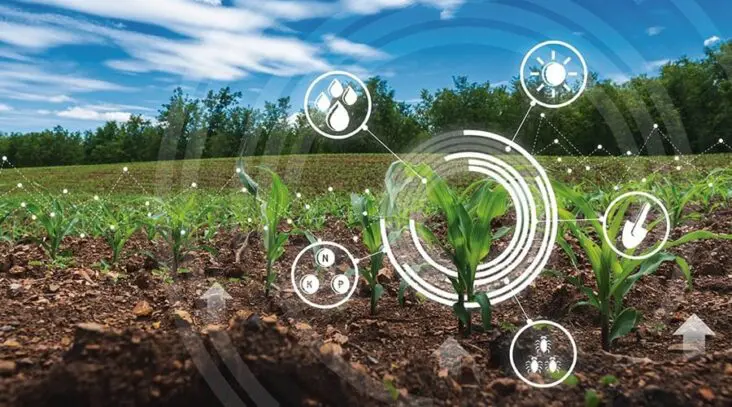The world’s population is expected to get to 9.7 billion by 2050. With it comes the challenge of feeding a growing population while also addressing the issues of food security, climate change, and environmental sustainability. The agriculture industry has turned to genomics to improve crop breeding and livestock production to meet these challenges.
Genomics studies an organism’s DNA, including its genetic makeup, structure, and function. In agriculture, genomics is used to identify desirable traits in crops and animals, understand how those traits are inherited, and develop breeding strategies to improve yields, disease resistance, and environmental sustainability.
The field of Agrigenomics has its roots in the early days of agricultural breeding when farmers and breeders would select specific crops or animals with desirable traits for reproduction. However, it wasn’t until the advent of modern genetics and genomics in the late 20th century that researchers could understand these traits’ genetic basis and develop more precise breeding strategies.
Agrigenomics has many applications across agriculture, including crop improvement, livestock breeding, disease resistance, and food safety. Some specific examples include:
Crop improvement

Traditional breeding methods involve crossing different varieties of plants to produce offspring with desirable traits, such as increased yield, disease resistance, or better quality. However, this process can take several years, and the resulting plants may not exhibit the desired traits consistently.
Agrigenomics is used to identify genes that control important traits such as yield, quality, and resistance to pests and diseases. This data can be used to develop new varieties of crops that are more productive, nutritious, and sustainable.
With genomics, plant breeders can identify the specific genes responsible for desirable traits and use them to develop new varieties of crops more quickly and accurately. This process is known as marker-assisted selection (MAS), and it involves using DNA markers to identify the presence of desired traits in plants. MAS has been used to develop new varieties of crops that are more resistant to pests, diseases, and environmental stressors, such as drought and heat.
For example, researchers used MAS to develop a new wheat variety resistant to a deadly fungal disease called stem rust. The new type, Ug99-resistant wheat, is estimated to have saved millions of lives and billions of dollars in lost crops since its release in 2011.
Livestock breeding

Genomics has also been used to improve livestock production. In traditional breeding methods, animals are selected based on physical traits like size or meat quality. However, these traits are influenced by many genes, making it challenging to predict which animals will produce offspring with the desired characteristics.
Agrigenomics is used to identify genetic markers associated with traits such as growth rate, meat quality, and disease resistance in livestock. This information can be used to select breeding pairs more likely to produce offspring with desirable traits.
This process is known as genomic selection, and it involves analyzing the animal’s DNA to identify the presence of desired genes. Genomic selection has been used to develop new breeds of livestock that produce higher-quality meat, milk, or wool and are more resistant to diseases.
For example, researchers at the University of Queensland used genomic selection to develop a new breed of sheep that produces more wool and meat while also being more resistant to parasites. The new species, known as the “Sheep CRC,” is estimated to have increased the productivity of Australian sheep farms by over $500 million.
Disease resistance

In agriculture, disease resistance refers to the ability of crops or livestock to resist or tolerate disease-causing pathogens, such as viruses, bacteria, fungi, and parasites. Traditional breeding methods for disease resistance can be slow and labor-intensive. However, the application of Agrigenomics allows for faster and more precise identification of genes and markers associated with disease resistance.
Using advanced genomic techniques, researchers can identify the genetic basis of resistance to specific diseases and pests in crops and livestock. This information can be used to create new varieties of crops that are more resistant to diseases or pests. This, in turn, leads to increased yields, improved food security, and reduced reliance on chemical pesticides and herbicides.
In other words, Agrigenomics is used to identify genetic markers associated with disease resistance in crops and livestock. This information can be used to make new varieties more resistant to pests and diseases.
Food safety
Agrigenomics also plays a vital role in ensuring food safety. It is used to identify genetic markers associated with foodborne pathogens and contaminants. This information can be used to develop more effective methods for detecting and controlling these hazards in the food supply.
For example, Agrigenomics has been used to develop rapid diagnostic tests for foodborne pathogens such as Salmonella and E. coli. These tests use DNA-based technologies to detect the presence of these pathogens in food samples, allowing for early detection and control of outbreaks.
According to experts at https://go.eurofinsgenomics.eu/agrigenomics/, Agrigenomics is also used to identify genetic markers associated with allergens and toxins in food. This information can be used to create new varieties of crops that are less likely to contain these harmful substances, reducing the risk of food poisoning and allergic reactions.
Sustainability of agriculture

Genomics is also being used to improve the sustainability of agriculture. By identifying genes associated with desirable traits, breeders can develop crops and animals that require less water, fertilizer, and pesticides, reducing the environmental impact of agriculture.
For example, researchers at the University of California used genomics to develop a new variety of tomatoes that requires less water and produces more fruit per plant.
Furthermore, genomics is helping to address the challenges posed by climate change. By identifying genes associated with traits such as drought tolerance or heat resistance, breeders can develop crops that can better withstand climate change, such as droughts or heat waves. This is crucial in regions where climate change is expected to significantly impact agricultural productivity.
The bottom line
Genomics is revolutionizing agriculture by improving crop breeding, livestock production, sustainability, and resilience to climate change. By identifying specific genes associated with desirable traits, breeders can develop new varieties of crops and animals more quickly and accurately, leading to higher yields, better quality, and improved environmental sustainability.

